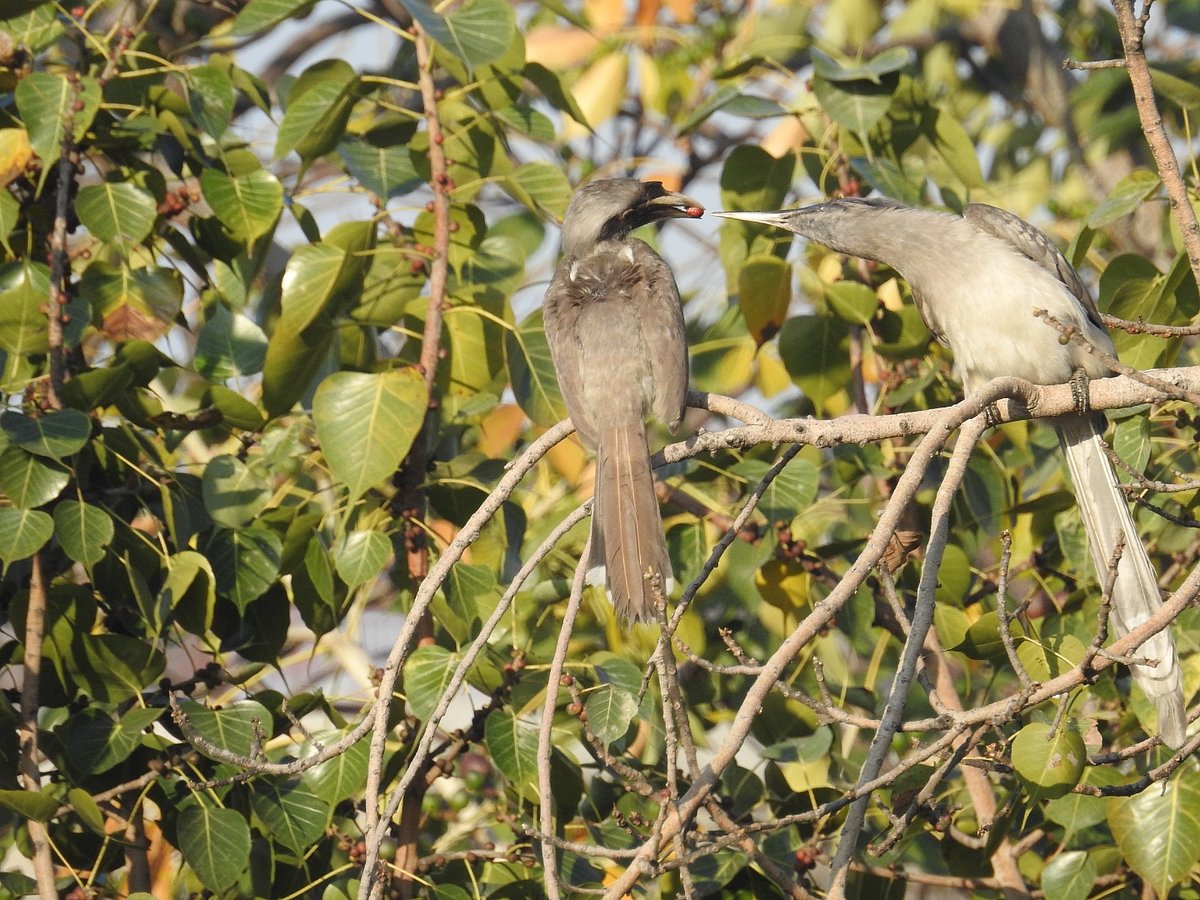Trees Belong Everywhere, Not Just In Forests
The flowers that come first on a tree are troopers – across the landscape, providing the first sugar-rich booster shots of energy.

What are your favourite things?
A first car, the pen you wrote your last exam with, a vintage framed photo, a school medal, an interesting NFT, a tree that stands outside your window — or a tree that once stood but remains in your heart.
We perhaps don’t realise it but the deep shadows of trees nourish our lives, providing relief and shelter. It may have been the tree near your school bus stop, in a garden, a playing field, next to the gym, across a mall. There’s always been a significant tree, or more than one, in our lives. Across India, people are standing up for trees. Not the ones that grow dramatically in forests, but the ones that grow dramatically amidst us.

A brown-headed barbet on orange semal flowers at Moti Bagh, Delhi. (Photographer: Neha Sinha)
In a recent case, the Delhi High Court said agencies can’t damage trees while carrying out public works. It is criminal to damage trees, and this takes the city 20 years back, the court observed, responding to a case filed by citizens after trees were damaged in South Delhi’s Chittaranjan Park following the digging up of a footpath. In Vile Parle, an activist was detained after he questioned the cutting down of a 100-year old Peepal tree. In Telangana, efforts are on to save a 100-year old Banyan that was struck by a storm.

A woodpecker on a semal tree in a park in Delhi. (Photographer: Neha Sinha)
Recovering from my second bout of Covid-19 this January, plagued with a fuzzy head and a fatigued body, I looked at the tree outside my house. I was trying to return to rising early and restoring my Circadian rhythm. Like many covid victims, my sleep was shallow and disturbed, and I fell into bed at the slightest exertion.
A Peepal tree stood tall and broad outside my house, shouldering three Semal trees. The Semal would blossom soon – but at the time, the Peepal was fruiting. I watched the heart-shaped leaves spin like tops in the cool late-February winds. But the leaves also moved as if disturbed by jets of water. I thought I was still hallucinating from my fever. But on closer inspection, I saw the moving green portions were not leaves at all. They were Yellow-Footed Green Pigeons, tree-loving, fruit-eating pigeons that are also the state birds of Maharashtra.

A hariyal or Yellow-footed green pigeon gobbles peepal figs. (Photographer: Neha Sinha)
The green pigeons were moving all over the tree, their feast silently underway. I watched as the plump birds gulped down one fig after the other — the bruised purple of the fruit contrasting beautifully with the new-leaf greens of the birds' feathers. They would make a soft, cooing whistle when not eating. They were as different from the Blue-Rock Pigeons that sit on our building ledges, as apples are from figs.
Soon, there was a reason to wake up early – the birds were only active when the sun first came up, warming the branches of the tree. After 10 am, they would retreat into the foliage.
There is always a job to wake up for, but to wake for something far away from excel sheets, deadlines, and Zoom calls is like waking for the excitement of meeting friends. As the days moved forward and my strength budded, the Semal started putting out its first, cautious flowers. First flowers look less impressive than an entire tree in bloom, but they attract a lot of wildlife. The flowers that come first on a tree are troopers – across the landscape, they provide the first sugar-rich booster shots of energy.

A pied myna perches on a flowering branch. (Photographer: Neha Sinha)
The sights changed from calm green pigeons to a frenzy of flashing colours. Tiny little Indian White-Eyes, moving like mini storms between branches, dipped deeply inside the Semal flowers to drink their fill, the flowers encompassing the birds completely. Purple Sunbirds sat inside the flowers too, feeding or perhaps just taking in the view.

A purple Sunbird, in brilliant breeding plumage, shines in the morning sun. (Photographer: Neha Sinha)
To my absolute delight, huge Alexandrine Parakeets came and gleefully tore the flowers to shreds—eating only the second or third mouthful and dropping the rest— the most brutal of food critics.

A pair of Alexandrine parakeets feeds on semal flowers. (Photographer: Neha Sinha)
Pied Mynas jostled with Common Mynas and Brahminy Mynas for space on the branches. Plum-Headed Parakeets — beautiful birds with plum or grey coloured heads — landed daintily on the Semal, pecking at the buds, looking like flowers themselves.

Plum-headed parakeets look for breakfast. (Photographer: Neha Sinha)
On the Peepal, Coppersmith Barbets fed and used the tree as a stage for their songs. A tall tree has the best kind of acoustics. A flowering tree provides apt theatre.
As I watched daily, the most beautiful thing I encountered was a male Grey Hornbill stuffing his throat with peepal figs to feed his partner. I watched him hop along the branches, collecting figs, feeding her, once, twice, three times. He fed her repeatedly, and then he ate, proving that the language of togetherness is not just for humans.

A male grey Hornbill feeds peepal figs to his mate. (Photographer: Neha Sinha)
These were a clutch of single trees, but single trees are an important part of the life of many kinds of creatures.
Following the recent Forest Survey report, Environment Minister Bhupender Yadav said that trees outside forests are also important. Certainly, they are. For physical and mental health. The only question is: how can they be saved as the girth of cities expands?
One way is by understanding all the units that use a tree. A Hornbill couple is one such unit, and so is a convalescing columnist. So are others who have come together to save trees they consider more important than highways – like a Banyan tree that is said to be 400 years old in Miraj, Maharashtra. I have learnt that those who love trees will learn to fight for them.
As I look to wildlife and trees to take me far from life’s little drudgeries, I get by on small sleeps so I can be up with the birds. It’s a tough routine, but nothing good ever came easy, and nothing is as good as a tree shading a city.
Neha Sinha is a conservation biologist. She is the author of ‘Wild and Wilful - Tales of 15 iconic Indian species’.
The views expressed here are those of the author and do not necessarily represent the views of BloombergQuint or its editorial team.

